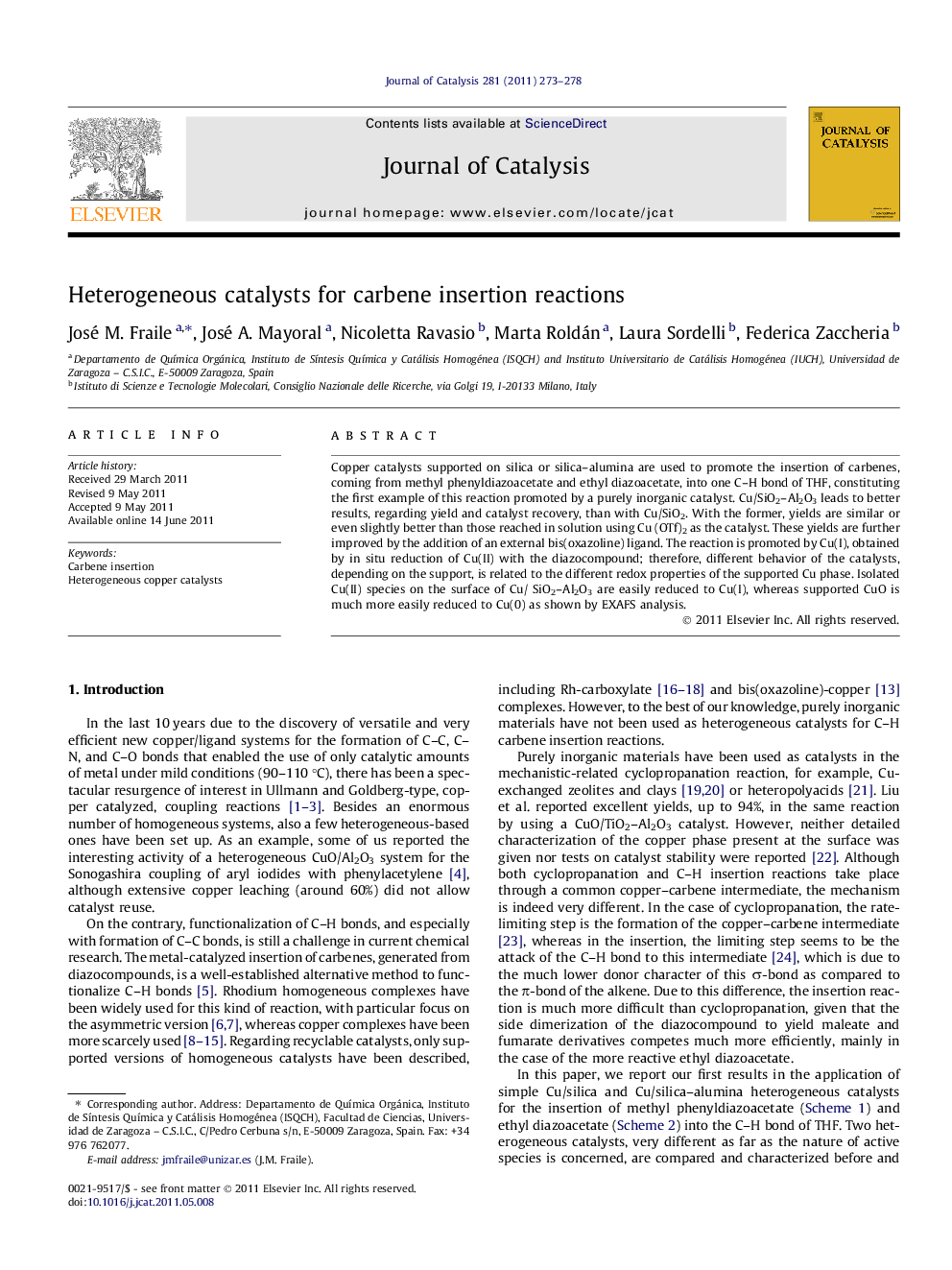| Article ID | Journal | Published Year | Pages | File Type |
|---|---|---|---|---|
| 61677 | Journal of Catalysis | 2011 | 6 Pages |
Copper catalysts supported on silica or silica–alumina are used to promote the insertion of carbenes, coming from methyl phenyldiazoacetate and ethyl diazoacetate, into one C–H bond of THF, constituting the first example of this reaction promoted by a purely inorganic catalyst. Cu/SiO2–Al2O3 leads to better results, regarding yield and catalyst recovery, than with Cu/SiO2. With the former, yields are similar or even slightly better than those reached in solution using Cu (OTf)2 as the catalyst. These yields are further improved by the addition of an external bis(oxazoline) ligand. The reaction is promoted by Cu(I), obtained by in situ reduction of Cu(II) with the diazocompound; therefore, different behavior of the catalysts, depending on the support, is related to the different redox properties of the supported Cu phase. Isolated Cu(II) species on the surface of Cu/ SiO2–Al2O3 are easily reduced to Cu(I), whereas supported CuO is much more easily reduced to Cu(0) as shown by EXAFS analysis.
Graphical abstractCu(II)/SiO2–Al2O3 is an efficient and recoverable catalyst for carbene insertions into THF.Figure optionsDownload full-size imageDownload high-quality image (51 K)Download as PowerPoint slideHighlights► Cu(II) on silica–alumina efficiently catalyzes the carbene insertions into THF. ► Isolated Cu(II) easily reduced to Cu(I) is key for the better performance. ► Addition of bis(oxazoline) improves activity and induces enantioselectivity. ► Recovered and freshly prepared catalysts show similar copper species.
